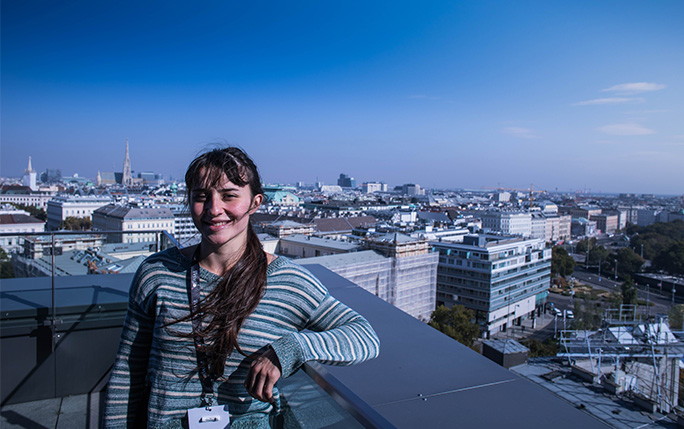Siara Fabbri successfully completes PhD

Earlier this month, Siara Fabbri, AVA Fellow based at the University of Manchester and CERN, passed her PhD viva on Optimization of Antiproton capture and delivery for ALPHA Antihydrogen experiment. Siara joined the AVA project in 2017 and has been a member of the ALPHA collaboration for which her supervisor Dr William Bertsche is the deputy spokesperson. A brief introduction into the subject of her PhD thesis is given below.
The ALPHA (Antihydrogen Laser PHysics Apparatus) collaboration at CERN is testing Charge-Parity-Time (CPT) symmetry through precise measurements with antihydrogen atoms and in the future will measure antihydrogen’s free fall acceleration in Earth’s gravitational field. The antihydrogen atoms are created by slowly merging cold plasmas of antiprotons and positrons. The production rate is highly sensitive to the parameters of these plasmas and typically only a few atoms have been available at a time for measurements. A limit is placed early on in the achievable number of trapped antihydrogen by the inefficiency when capturing antiprotons from the Antiproton Decelerator (AD). Historically, over 99 % of antiprotons are lost during the capture process as a result of the 5.3 MeV initial kinetic energy of the delivered beam. ELENA is a new storage ring coming online in 2021 which will lower this initial kinetic energy of the beam to 100 keV, improving the capture efficiency of antiprotons for ALPHA and other experiments.
To accommodate for ELENA, it will be essential to upgrade the ALPHA antiproton Catching Trap (CT) and in particular the antiproton degrading apparatus which is responsible for slowing down the incoming beam to trappable energies. Following these upgrades, it is expected that the antiproton capture efficiency will increase from less than 1% to upwards of 50%. To effectively utilize the anticipated larger number of trapped antiprotons and translate this to a gain in antihydrogen production, new plasma manipulation and delivery techniques need to be developed. This thesis describes those upgrades and associated techniques which optimize the capture of antiprotons from ELENA, as well as the preparation and delivery of the antiprotons for antihydrogen creation.
In Siara’s thesis, first the development of the new antiproton degrading apparatus to slow antiprotons delivered by ELENA is presented. A combination of semi-analytic models and Monte Carlo particle tracking simulation techniques are used to design the new degrading apparatus. Next, numerical simulations of a technique for non-destructively characterizing the parameters of the antiproton plasmas are described, and these are compared against theory. Finally, a method for extracting controlled, reproducible beams of antiprotons from the CT is discussed. A combination of theoretical models and numerical simulations are assembled into a framework for understanding and modeling the extraction of these beams.
Congratulations!